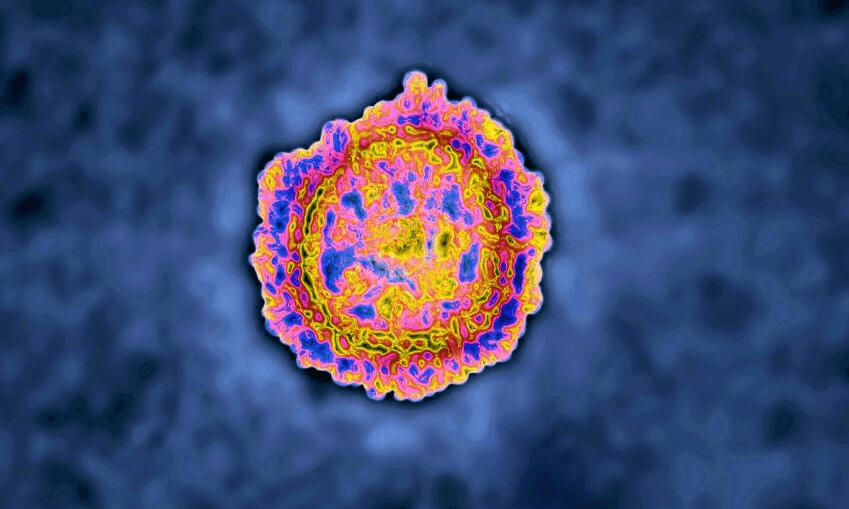Every year high school biology teachers gather to learn the latest in science. This year there’s a lot to catch up on, Maurice Wilkins Centre organisers Rachel Heeney and Dave Grattan tell The Spinoff.
Last year, terms like “elimination strategy”, “flatten the curve” and “sustained transmission” were foreign to the majority of New Zealanders. Next year, there’s a good chance they’ll be in the school curriculum.
The Maurice Wilkins Centre, a biomedical research organisation, funds an annual two-week tour of schools across the country, bringing scientists into the lives of high school biology teachers for a professional development course. The NCEA biology curriculum is constantly updated in line with the latest discoveries, and its teachers value staying on the cutting edge.
A year ago its organisers were planning a more traditional set, in line with the usual curriculum on circadian rhythm and speciation. Instead, this year’s lectures ended up with a tight focus: basic biology of viruses and viral infections, viral evolution, detection and diagnostics, epidemiology and public health, immunology and vaccine development. In a nutshell: Covid-19.
Rachel Heeney, head of the science department at Epsom Girls’ Grammar, has been organising the Maurice Wilkins days for nine years. This year, University of Otago professor Dave Grattan joined her on the road. “When I was involved as a speaker it was always fun,” said Grattan. “That’s why I volunteered to organise it.”
Scientists in the programme are often well-known within their fields, or recommended by someone who is; they’re not usually well-known to the general public. This year is different. This year saw Siouxsie Wiles, Michael Baker, Jemma Geoghehan, Vernon Ward, Anna Brooks – the list goes on, and the line up changed as the tour moved up the country for six separate day events.
Grattan said the scientists haven’t always been celebrities, but a newfound appreciation for biology has launched many of them into the spotlight. “People have stepped up within their research area and become celebrities by chance. Michael, for example, is extremely well known because he’s been very forthright in his views – and he turned out to be right, which helps.”
Geoghehan was studying virus evolution in fish when Covid-19 struck. “You can imagine going to the New Zealand public and saying, ‘the government is giving this person a million dollars to study fish viruses’,” said Grattan. “But as it’s turned out, she basically suggested genome testing, which is now strategy number one.”
Grattan said the scientist celebrity phenomenon is new, but isn’t necessarily a bad thing. “People like Nanogirl and Siouxsie Wiles – we probably need more of them.” Wiles and Michelle Dickinson (Nanogirl) have been communicating science to the public for years, which put them in a good position to calm and guide people when the pandemic reached New Zealand.
Heeney said that for teachers, it’s thrilling to be able to show students science is full of Siouxsie Wileses and Michael Bakers and not just lonely lab work. “What I tell my students about these scientists is that, at their core, they’re creatives. And that has really helped them this year.”
Last week, more than 180 teachers came from across Auckland and Northland to fill the Auckland Girls’ Grammar auditorium. Over 400 biology teachers have attended six different events across the country. Heeney said turnout is bigger this year than last. “Our schools have lost a lot of money, and everything’s been a bit harder, but more people have come.
“We’ve been bulging at the seams of the venues we’ve found.”
The Spinoff attended the day’s lectures by epidemiologist Michael Baker and virologist Vernon Ward. As Ward discussed the lifecycle of the coronavirus, he pointed to a slide. “As of two days ago, this diagram is wrong,” he said. This is a professional hazard, but also an example of how exciting working in biology is right now.
“On the first leg of the trip we had (immunologist) James Usher, and he had a slide about vaccines,” said Grattan. The day after he’d put the finishing touches on it, Pfizer announced it had a vaccine that was looking viable. “He was updating his slides every day.
“The data is changing as we speak, which is cool.”
Baker, a pandemic Nostradamus, provided a review of how our government and others adapted to the outbreak and strategised for it. He showed pictures of empty Wellington motorways. “We may never see these images again,” he said. “Unless we decarbonise our society, which might be a good idea.” Well, he was right about the lockdown.
As the group broke for lunch, the next speaker – cellular immunologist Anna Brooks – was already fielding questions. The teachers were taking selfies with the scientists to show their students.
“It’s really nice when a school sends its whole department, because they can get together and discuss how to implement it all,” said Heeney. Her fellow EGGs teachers were there, discussing the new vaccines. In the new year, their students will be among the most up-to-date teenagers in the world.
“Next year we will bring back extra knowledge of, hopefully, how things have become better.”

